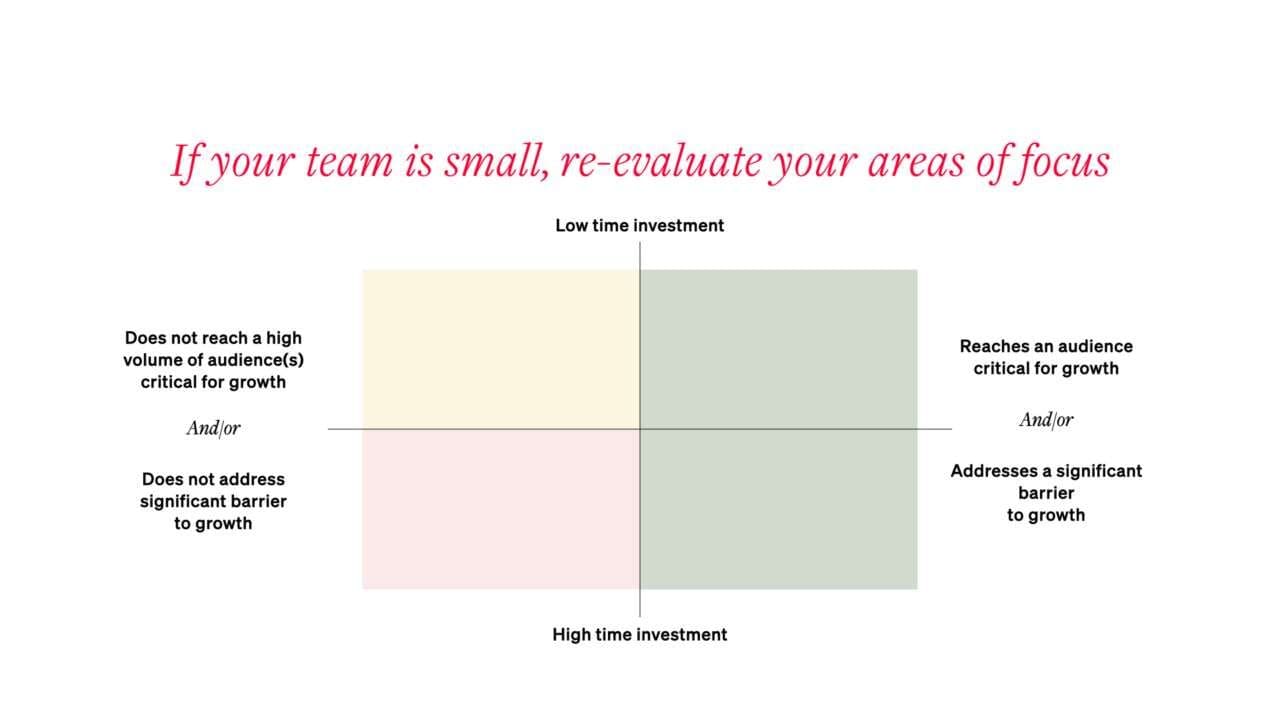Navigating the Waters as a Challenger Brand: A Marketing Specialist’s Guide

The Challenger Brand Ethos
Challenger brands lack the advantage of vast resources or market dominance – they’re the underdogs of the industry. But what they lack in strength, they make up for in agility and innovation. These brands compete by challenging the status quo, disrupting their markets, and looking for angles to outsmart rather than outspend their competitors.
Brand Evaluation Metrics: Quality, Selectability, Resources, and Differentiation
To navigate this challenge, it’s crucial to step back and evaluate your brand from multiple angles. This isn’t just about how your brand is perceived, but also understanding your capabilities.
How does your product or service quality measure up against competitors?
Are you easy for customers to select?
Do you have sufficient resources to meet marketing goals?
How distinctive is your brand positioning?
Download this simple worksheet we developed to perform a high-level evaluation to start conversations with your team about where to focus your marketing efforts.
Approaches for Common Brand Challenges
Depending on where your gaps are, here are strategic pointers for each scenario:
If your product feels like it’s blending into the background, it’s time to spice things up. Advocate for enhancing the quality of your organization’s products or services. This might mean investing in better materials, technology, staff, or highlighting the unique aspects of a product or service that are not well-associated with your brand today.
Make it easier for customers to choose your brand by enhancing your visibility. Improve your online presence, optimize your SEO strategies, and ensure your unique selling propositions (USPs) are front and center where your potential customers are looking.
If selectability varies across your organization, take the lead in developing collaborations across your organization to gather data that points to areas that already have access and those that aren’t ready to convert leads.

If you’re operating with a lean team or low budget, focus your efforts on high-impact marketing activities. Re-prioritize and automate tools to handle repetitive tasks where possible, so your team can focus on the efforts that have the biggest impact on reaching your organization’s goals.

We often hear marketing leaders struggle to identify the value of investing in branding.
- Use large data analysis that spans industries to point to the value of investing in brand-building:
Kantar’s analysis of 170,000 consumers across 17 years of corporate financial and quantitative research has found strong brands not only have higher market shares but they also recover from market fluctuations more quickly.
Neilsen analysis found that a 1-point gain in brand metrics, such as awareness and consideration, drives a 1% increase in sales. In contrast, a brand loses an average of 2% of future revenue for every quarter it stops advertising.
Peter Field and Les Binet’s analysis published in The Long and Short of It reviewed more than 700 brands in more than 100 profit and non-profit categories and found brand campaigns support market share growth more strongly over the short and long term than direct response campaigns.
- Forge relationships with your finance, sales, and operations teams to identify key performance indicators (KPIs) to evaluate together, such as:
- Immediate impact KPIs
Brand interest
Lead volume
Quality of leads
- Long-term impact KPIs
Perception of brand
Perception rank
Willingness to use
Key business metrics, such as sales and market share growth
- Immediate impact KPIs
A brand that’s distinctive drives recall when someone is ready to look for your products or services. Distinction is best achieved by both aligning with your target audience’s values and presenting your brand in a way that’s not easily confused for your competitors.
Many brands struggle not only with how to present their brand, but also what to say. We have found staff and customer interviews, as well as focus group research, to be an effective way to inform how to distinctly speak about your organization to your target audiences.
But it’s not only important to select what to say. It’s incredibly important how you say it. High-quality creative can be a powerful element to set your brand apart from competitors.
Kantar analysis found brand distinction was the biggest factor common among the world’s leading brands.

WRAP UP
Embracing your status as a challenger means adopting a mindset where challenges are reframed as opportunities. Focus on what will move the needle for your brand, say no to everything else, and prepare to disrupt the status quo.
If you have questions or need guidance in navigating your market, Lewis would be happy to assist. Reach out to hello@lewiscommunications.com to set up a free initial consultation call.